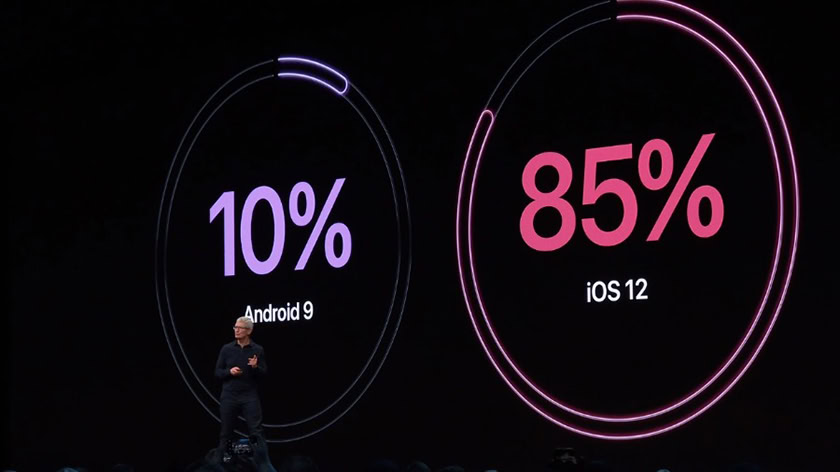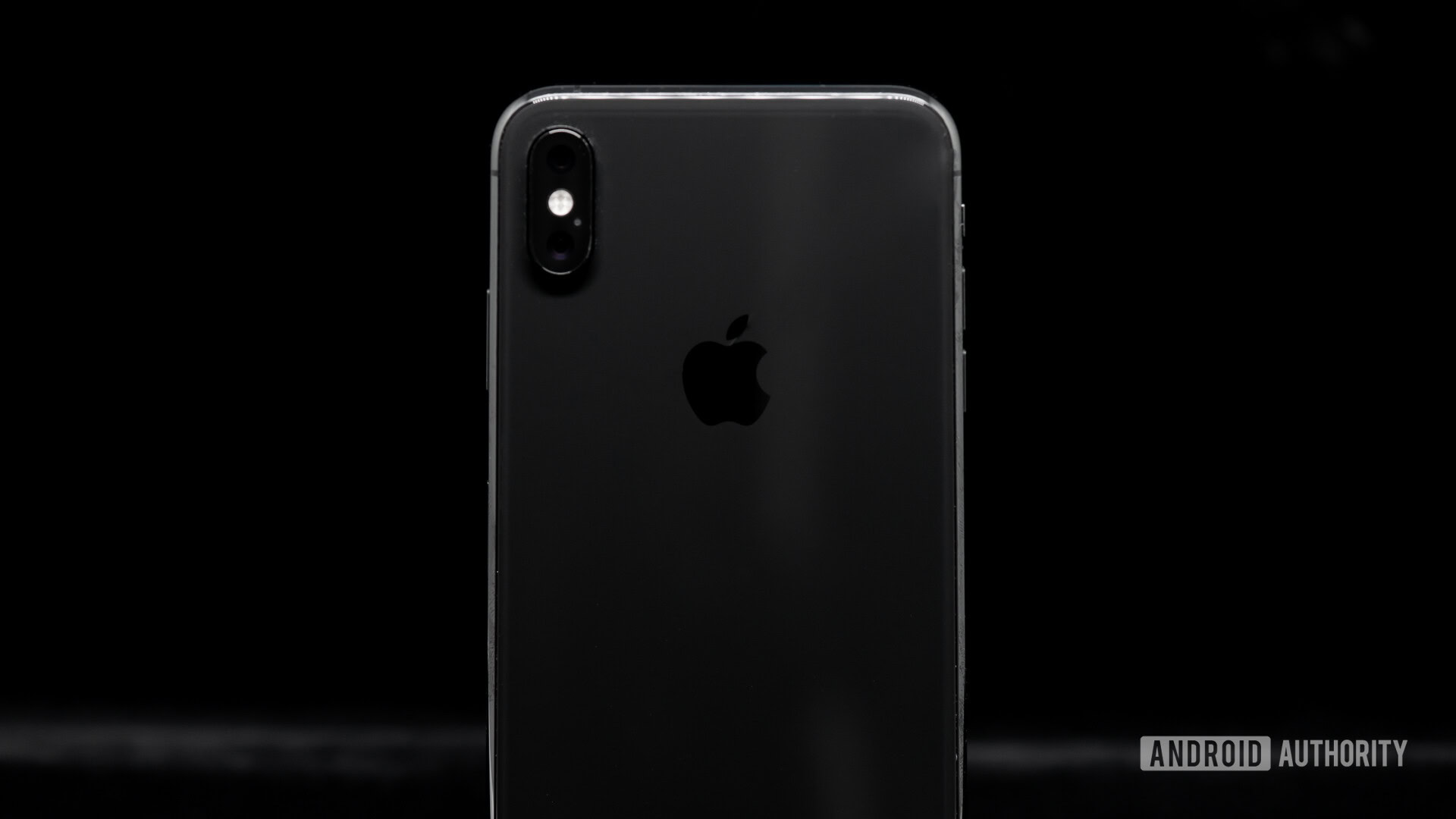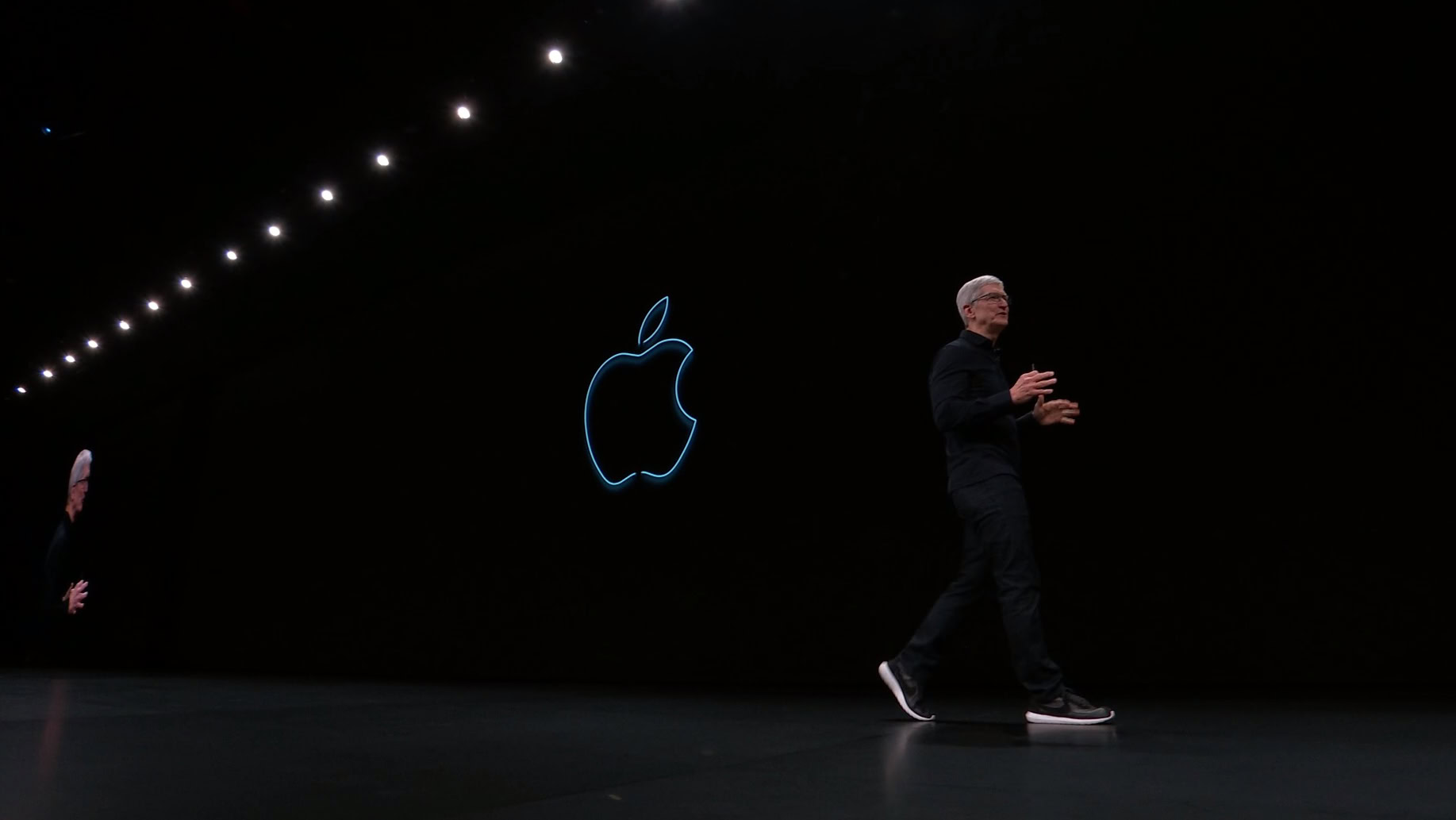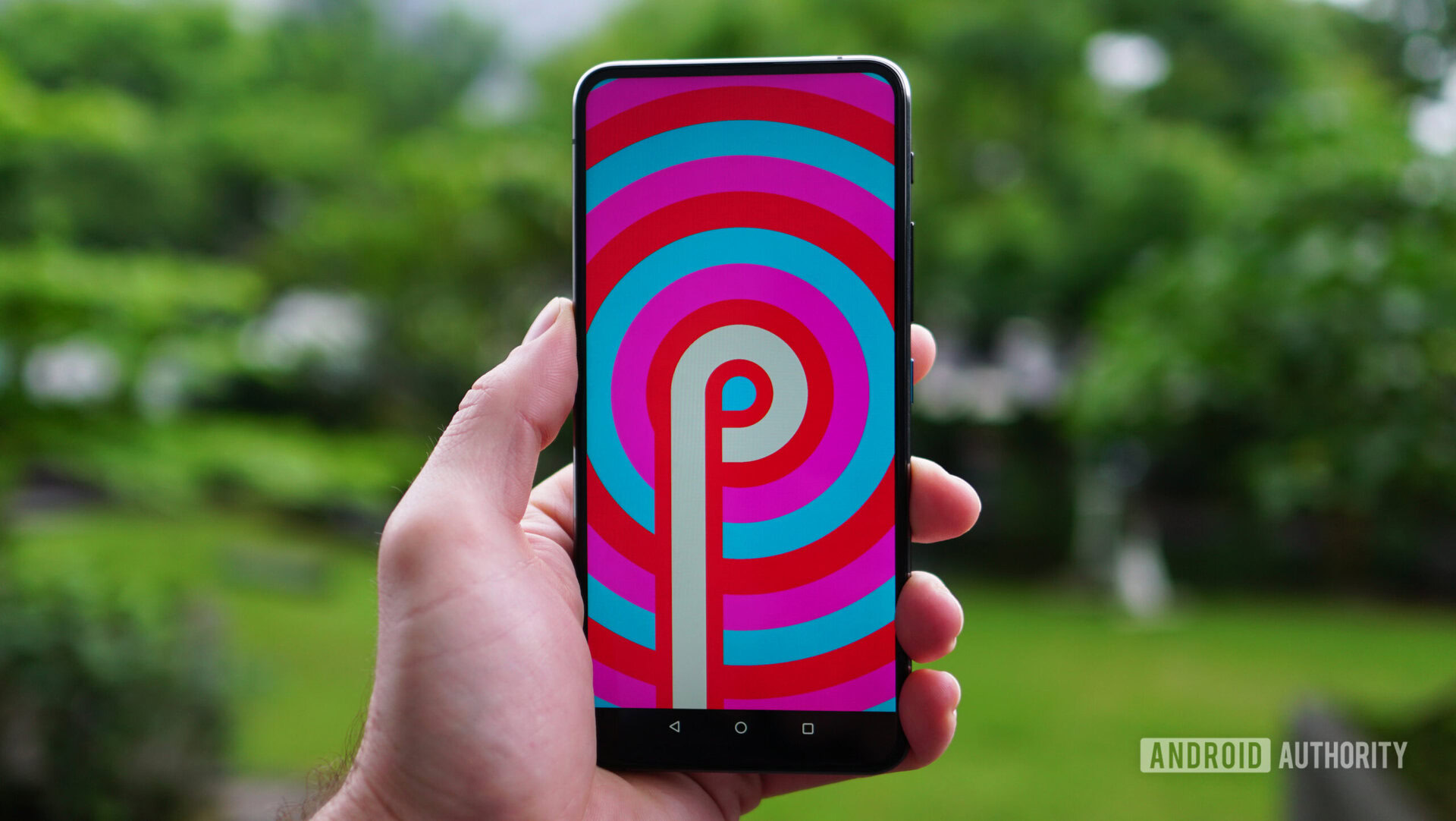Affiliate links on Android Authority may earn us a commission. Learn more.
Apple's digs at Android distribution numbers are getting old

On Monday, Apple kicked off its annual event: the 2019 Worldwide Developers Conference (WWDC). As with every WWDC over the past few years, the keynote address saw Apple CEO Tim Cook take the stage to talk about the various things achieved with the most recent version of iPhone software — in this case, iOS 12.
During the keynote, Cook took the opportunity to pop a shot at Android by displaying the image above: a comparison between iOS distribution numbers and Android distribution numbers for the most recent versions of both operating systems. According to Apple’s data, iOS 12 is on 85 percent of applicable Apple devices, while Android 9 Pie is only on 10 percent of Android devices.
This dig at Android isn’t new. Here’s Cook doing the same thing in 2018 and here’s another from 2017. Each time, the joke is the same: “Look how much better iOS is than ‘those other guys’ out there, yuk yuk.”
The joke is tired and wholly unwarranted.
Let’s examine these numbers

The numbers Cook displayed behind him during the keynote address seem very straightforward: iOS 12 is on the overwhelming majority of Apple devices while Android 9 Pie is on about a tenth. Apple wins this round, right?

Not quite. According to recent data from Apple itself, there are 1.4 billion Apple devices in the world, of which 900 million are active iPhones. Not every iPhone out there is capable of running iOS 12 (which only works on iPhone 5S or newer), but let’s just use the 900 million number as a reference point since it’s the only one we know.
As for Android distribution, there are well over 2 billion devices out there. According to the latest numbers from Google, 10.4 percent of those 2 billion devices run Android 9 Pie, or about 208 million devices.
While 208 million devices is still a far cry from 900 million, the difference between those two numbers paints a much different picture than the percentages Cook displayed at WWDC. Yes, Apple is “winning,” but when you look at actual unit numbers its lead isn’t quite as great.
Apples vs. oranges (or Androids)

I made a point to show a different perspective of distribution numbers in the previous section, but in the end, it doesn’t even matter. When it comes right down to it, Apple has the luxury of pushing out software updates to its own products — devices it created running hardware it designed with a mainline connection directly to home base.
Google doesn’t have this luxury, so of course Android distribution numbers are going to be behind Apple’s. Google has to give the latest version of Android to dozens of OEMs which in turn need to examine and optimize that software to make sure it will work on their specific hardware configurations. Then those OEMs need to push out the updates themselves to those devices — although some need to also work with carriers from around the world before that push can happen. Some OEMs are better at this than others.
Is Apple’s system better and easier? You bet it is. Is the Android world capable of achieving the same level of efficiency? Not in Google’s wildest dreams. In that sense, comparing Apple’s success to Android’s when it comes to software distribution is a useless endeavor.
The numbers also ignore the idea that the distribution of operating system versions is only part of the full picture when it comes to Android. Throughout the year, Google is constantly updating system apps, Google Play Services, security features, and other aspects of Android — the iOS equivalent of which Apple considers part of the operating system. In other words, Apple makes a big to-do about pushing out a new iOS once each year, but Google is pushing smaller-but-still-important updates to 2 billion devices multiple times per year.
Frankly, we should be impressed by the fact that Google was able to get Pie onto over 10 percent of Android devices around the world in less than a year given the limitations it faces. This achievement is a representation that Google is on the right track. Even Apple should be noticing! In 2018, Apple’s chart showed only six percent Android distribution for Oreo. Google is getting better even with the limitations it faces that Apple simply doesn’t.
In that sense, Apple’s dig at Android is merely mean-spirited, the equivalent of Richie Rich talking about how much bigger his boat is compared to Blue Collar Joe’s. Of course it is, Richie — you’ve got it way easier than Joe.
Please, Apple: don’t stoop to this tired “joke” again next year.
NEXT: Apple sued for allegedly selling customers’ iTunes and Apple Music listening data